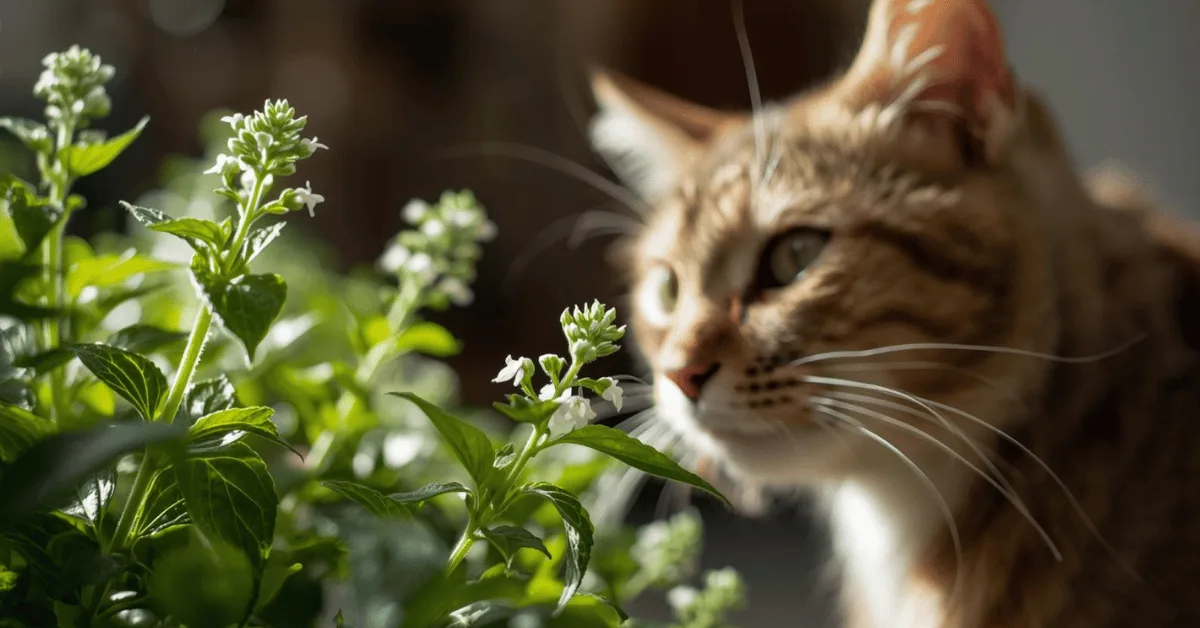If you’ve ever watched a cat roll, purr, or act downright silly after being exposed to catnip. This mysterious plant has fascinated pet owners for centuries. From its botanical origins to its surprising role in history, catnip continues to capture the curiosity of cat lovers worldwide.
What Is Catnip?
Catnip, scientifically known as Nepeta cataria, is a perennial herb in the mint family. Its fragrant leaves contain a powerful compound called nepetalactone, which is the primary reason behind its strange effects on cats.
Common Names and Plant Characteristics
Also known as catmint or catswort, catnip is native to Europe and Asia but is now found throughout North America. The plant grows quickly, featuring jagged green leaves and clusters of small white or lavender flowers. While humans may find its aroma mild and minty, cats experience it in an entirely different way.
Read Also
- Why Do Cats Roll on the Floor When They See You?
- Why Does My Cat Lick Me Then Bite Me?
- Why Does My Cat Rub Its Face Against Me?
- Why Cats Blink Slowly at You: The Ultimate Guide to Feline Love
The Science: Why Does Catnip Affect Cats?
The secret of catnip lies in its active compound, nepetalactone, which binds to receptors in a cat’s nasal tissue. Once inhaled, this chemical stimulates sensory neurons that trigger a behavioural response.
How Cats React to Catnip
- Roll on the ground
- Rub their faces against the source
- Purr, meow, or become more vocal
- Exhibit playful or hyperactive behaviour
- Enter a calm, relaxed state afterward
Interestingly, the catnip effects are temporary, usually lasting about 10–15 minutes before the cat loses interest. After a short refractory period, the response may return with renewed intensity.
Not All Cats Are Affected
It’s important to note that sensitivity to catnip is genetic. Studies show that roughly 30% of cats do not respond to catnip at all. Kittens and elderly cats may also show little interest, which adds to the mystery of why it affects some felines more than others.
A Look Back: The History of Catnip

Catnip isn’t just a modern curiosity—it has a long and fascinating history.
Catnip in Human Use
Long before it became synonymous with cats, catnip was used by humans for its medicinal properties. In European folk medicine, catnip teas were brewed to relieve colds, headaches, and insomnia.
The Cat Connection in History
While humans used catnip for health, cats were quick to claim it as their own. Historical accounts dating back hundreds of years mention cats being irresistibly drawn to the plant.
What Does Catnip Do to Cats? Behaviour Explained
The effects of catnip can look amusing to humans, but for cats, it’s a natural form of enrichment.
Playfulness and Stimulation
Many cats display bursts of playful energy after exposure. They may chase toys more vigorously or roll around as if they’ve tapped into an invisible well of excitement. This behaviour is believed to mimic feline hunting instincts, offering mental and physical stimulation.
Relaxation and Stress Relief
On the flip side, some cats react by becoming calm and relaxed. This is why catnip is often used in toys, scratching posts, and sprays—to help reduce stress and encourage positive interactions with their environment.
Is Catnip Safe for Cats?
One of the most common questions pet owners ask is whether catnip is safe. The good news is that catnip is completely non-toxic to cats. Even if ingested, it poses no harm beyond mild digestive upset in rare cases of overconsumption.
Pet experts often recommend offering catnip in moderation as a way to enrich a cat’s environment. For additional guidance, organizations like the ASPCA provide trustworthy information on pet safety and herbal plants.
Catnip Beyond Cats

While cats are the most famous fans, catnip has some surprising additional uses.
Catnip and Insects
Nepetalactone is a natural insect repellent. Research has shown it can be as effective as certain chemical repellents in deterring mosquitoes and flies, offering a natural alternative for humans.
Other Animals and Catnip
Though most commonly associated with domestic cats, some big cats—including lions and leopards—have also been observed responding to catnip, adding to its fascinating cross-species appeal.
The Timeless Allure of Catnip
So, what is catnip? At its core, it’s a humble mint-family plant with a powerful compound that sparks joy and curiosity in cats. From its historic role as a folk remedy to its modern place as a staple in pet toys, catnip has bridged the gap between humans and their feline companions for centuries.
Whether your cat rolls around in delight, becomes more playful, or simply relaxes after exposure, catnip offers a safe and enriching experience. The next time you see your cat go wild over a catnip toy, you’ll know there’s real science—and history—behind the fun.
Frequently Asked Questions
Is catnip addictive for cats?
No, catnip is not addictive. While cats may show strong excitement when exposed, they don’t develop a dependency.
Can kittens have catnip?
Kittens typically don’t respond to catnip until they are at least 3–6 months old. Their sensitivity develops with age, so it’s normal if younger cats seem unaffected.
Can dogs eat catnip?
Yes, catnip is safe for dogs, though it doesn’t trigger the same euphoric reaction. Instead, it may act as a mild relaxant, helping with stress or digestive upset in some dogs.
How often should I give my cat catnip?
Catnip can be offered a few times per week as a treat or enrichment tool. Daily exposure won’t harm your cat, but too much may reduce their sensitivity over time.
Are there alternatives for cats that don’t respond to catnip?
Yes, alternatives such as silvervine and valerian root can trigger similar playful or calming responses in cats that aren’t affected by catnip.

